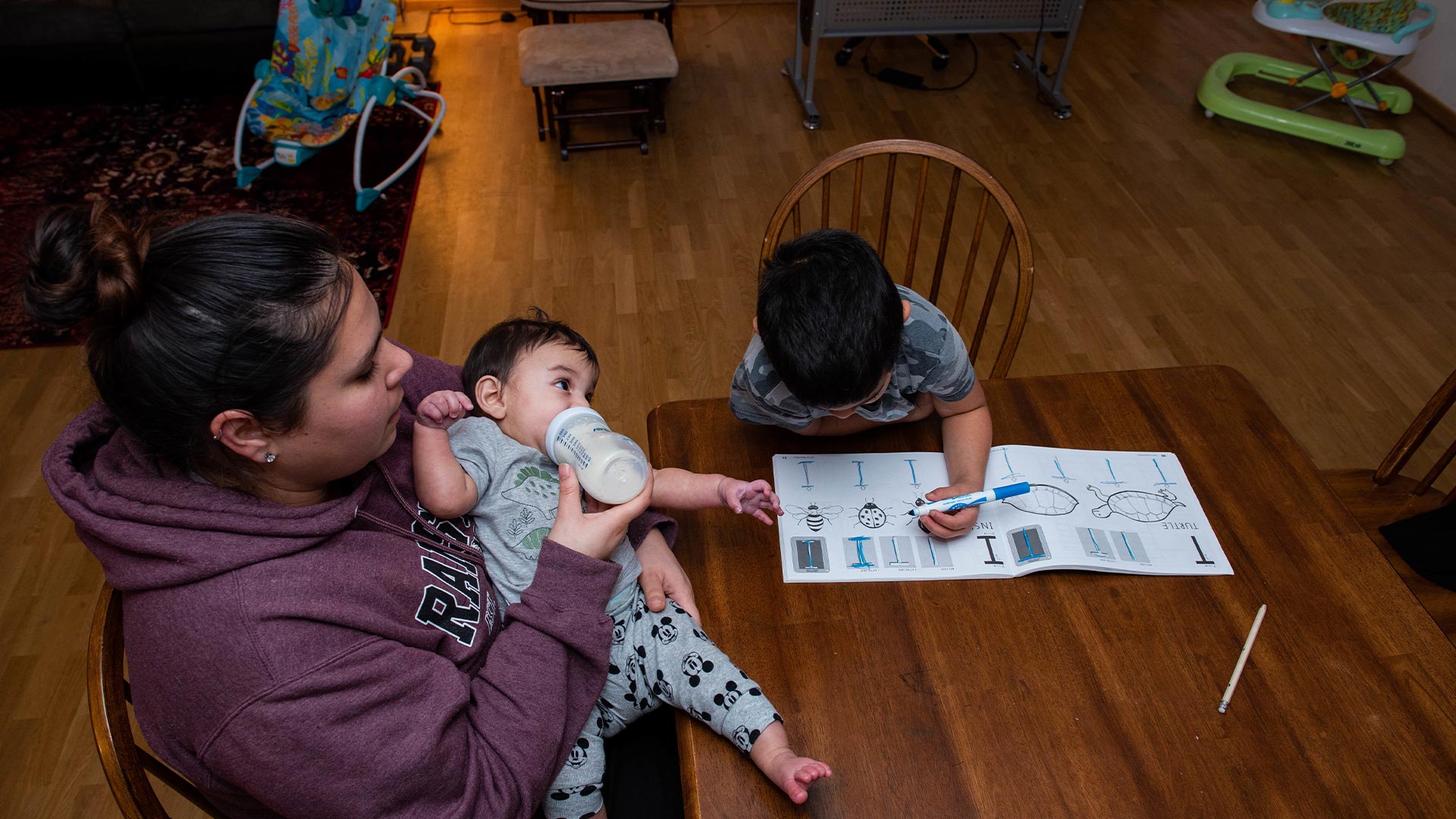Misbehavior and boundary testing are natural parts of growing up. However, dealing with it as a parent requires lots of deep breathing, patience and strategies for discipline. By using positive discipline, you can keep your children safe, help them develop valuable skills for life and receive the satisfaction that comes with keeping your cool.
Positive discipline techniques
The following approaches will help your child stay safe and develop self-esteem and self-control:
- Natural consequences — This is when the behavior or choice causes its own punishment. For instance, if a child refuses to wear a jacket, he or she will be cold. If you allow children to experience the unpleasantness of their choices without the use of “I told you so,” chances are they won’t put up a fight the next time you ask them to wear a coat or put their lunch in their backpack when you ask them to. Where parents experience difficulties with the effects of natural consequences is when the repercussions are too far in the future to be impactful—like leaving a bike out in the rain when the resulting rust won’t be apparent for several months or even years—or when the natural consequences don’t faze children—like having a messy room when they refuse to pick up their toys. A workaround for this is to use logical consequences in these situations.
- Logical consequences — These consequences involve more parent involvement to be sure the discipline and the misbehavior have some relation to each other. These consequences often use an “if/then” or “when you” statement. For example, if your child breaks the family rule of riding a bicycle without a helmet, then a logical consequence would be for your child to lose bicycle privileges for a reasonable period of time. You can also use logical consequences for those situations when your child doesn’t care about the natural consequences. For example: “When you have finished folding your laundry, then you may play a computer game.” Logical consequences should be:
- Related (not random) – If your child makes a mess, the logical consequence is to clean it up, not lose TV privileges. The exception for this technique is when you have framed your initial request within the “when you” context.
- Respectful (not using shame or humiliation to try to change behavior) – Using “I told you so” usually results in the child focusing on the blame and shame instead of processing the lesson to be learned. Instead, have a conversation about how the behavior and consequence are related and why it’s important for their safety or the well-being of other family members that they follow certain rules.
- Reasonable (age-appropriate) – For example, if cleaning up a mess would be impossible for young children to do alone, assist them in cleaning up rather than do it for them or expect them to complete the task alone. In addition, after unsafe or inappropriate choices are made, discuss what other options were possible for their behavior.
- Positive timeouts — When used correctly, timeouts give your child time to calm down and regroup. Timeouts should not be used as punishment but as a chance for children to correct their behavior and learn from their mistakes. Tell your child to take some time to calm down. Provide them with a private space, a special toy or a manipulative, soft pillow or blanket to help them cool down. Positive timeouts work well for parents, too. When everyone is ready to talk about what happened, you can sit down with your child to discuss the situation and behavior.
Stages of positive discipline
Age birth to 2 years
Try to keep your child happy by creating a safe environment to play inside your home and by establishing routines based on your child’s needs. Use the following positive discipline techniques:
- Redirect unwanted behavior. Infants and toddlers are too young to understand timeouts and should never be left alone. Instead, draw your child’s attention to a positive activity.
- Ignore misbehavior when it’s safe to do so.
- Praise your child to encourage learning, independence and positive self-esteem.
- Set a good example. Children learn more by watching adults than in any other way.
- Give your child choices that will avoid power struggles. For example, “Would you like milk or water?” A little decision-making power can give your child a lot of confidence.
- Try giving yourself a timeout if you think you are about to lose your patience. Step away from the situation and try to readdress it when you are back in full control.
- Parent with the end game in mind. Look at long-term solutions that will eventually help kids make their own decisions. Show your child respect and understand that criticizing, discouraging, blaming and shaming can cause more hurt than help at any age.
2 to 6 years old
Children this age learn by exploring and asking questions. They’re developing language and social skills, including sharing. They may want to try simple tasks on their own and will probably learn by trying new things and taking risks. Help your preschooler by adding the following age-appropriate discipline techniques to those above:
- Use positive timeouts when your child needs to cool off. Timeouts should be no longer than one minute for each year of your child’s life. Do not give attention, but give your child comfort items to help him or her calm down.
- Focus on what your child should do instead of what not to do.
- Praise good behavior rather than punish misbehavior. Rewards are fine but not when they become more important to the child than the good behavior.
- Establish rules, set clear limits and follow through if rules are broken. Natural and logical consequences are appropriate for breaking your rules.
- Discourage tattling. Offer to listen while children talk through their problems and use their own problem-solving skills to work things out instead of having you solve problems for them. Help them develop their own skills in working through dilemmas or disagreements.
6 to 12 years old
Children in this age range have more self-control than when they were younger, and they can follow rules, accept responsibility and make decisions. As your child gets older and develops new skills, the discipline you use should also change. Build on the positive discipline techniques already in place with the following:
- Adjust timeouts if you find they’re becoming less effective.
- Answer “why” questions in simple terms. Stay calm, even if you have heard “why” approximately 5,000 times that day! Children are curious, and we want to encourage their learning.
- Involve your child in the problem-solving process. If your children constantly argue in the back seat of the car, hold a family meeting to discuss the problem. Ask your children to offer solutions. Discuss why the arguing is a distraction to the driver and a safety issue.
- Make requests that are effective and positive. How you say something is just as important as what you say. Nagging, criticizing and threatening can be discouraging to your child. Save yourself from repeating instructions by asking children to repeat back what you’ve just told them. When you do address their behavior, keep it short or they may learn to tune you out.
- Use more actions and fewer words. Keep explanations brief and be sure to follow through. If you tell your children that you’ll pull over if they keep arguing in the back seat, do it. Stay parked in a safe place until they stop bickering. No words are needed.
Disciplining children demands patience and stamina. In between deep breaths, remind yourself that your children’s behavior issues are valuable opportunities to teach them the skills they’ll need to become successful adults. Using natural and logical consequences can help children:
- Learn from their mistakes and problem solve
- Value themselves as individuals
- Understand that you love and trust them
Military OneSource is here to support military parents. Access Thrive, a free online parenting education program created by the Clearinghouse for Military Family Readiness at Penn State. Thrive is interactive, fun and promotes positive parenting, stress management and healthy lifestyle practices. Choose one of four modules organized by age group. You can also utilize Military OneSource’s confidential counseling services, which includes help with parenting challenges.
If you’ve tried these positive discipline strategies for several weeks without improvement, your child’s doctor or the Family Advocacy Program on your installation may be able to suggest more specific ways to guide your child.










